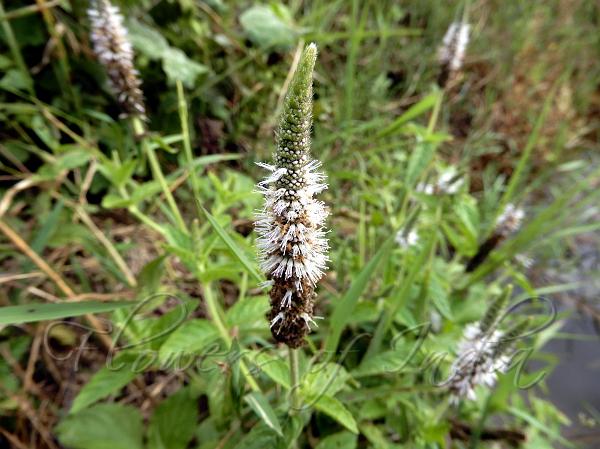|
| East-Himalayan Shrub-Mint |
|

|

| File size | 748048 |
| Original date | 10/16/21 1:15 PM |
| Resolution | 3648 x 2736 |
| Flash | Flash did not fire, auto |
| Focal length | 4.3mm |
| Exposure time | 1/640s |
| Aperture | 3.4 |
| Focus Distance | |
| Metering Mode | Center weighted average |
| Camera make | NIKON |
| Camera model | COOLPIX A900 |
| Sensor type |
|
|
|
|
Photo: |
Botanical name: Pogostemon auricularius Family: Lamiaceae (Mint family)
Synonyms: Mentha auricularia, Mentha foetida, Dysophylla auricularia, Eusteralis auricularia
Synonyms: Mentha auricularia, Mentha foetida, Dysophylla auricularia, Eusteralis auricularia
East-Himalayan Shrub-Mint is an annual herb with stems
0.4-2 m tall, prostrate basally, rooting at nodes, rising up, tip much
branched, densely yellow spreading hairy. Flowers are borne in spikes
6-18 cm, about 1 cm in diameter in flower, continuous or sometimes
interrupted at base; bracts ovate-lanceshaped, as long as flower,
margin bristly. Sepal-cup is bell-shaped, about 1 x 1 mm, hairless,
yellow glandular; teeth broadly triangular, about 1/4 as long as
sepal-cup tube, margin hairy. Flowers are purplish to white, about 2.5
times as long as sepal-cup, hairless. Stamens are much protruding,
protruding parts bearded. Leaf-stalks are rarely up to 1.2 cm, upper
stem leaves nearly stalkless; leaf blade oblong to ovate-oblong, 2.5-7
x 1.5-2.5 cm, yellow bristly, with scattered impressed glands, base
rounded to shallowly heart-shaped, rarely wedge-shaped, margin
sawtoothed, tip blunt to pointed; lateral veins 5- or 6-paired,
prominent below. Nutlets brown, nearly spherical, about 0.5 mm in
diameter, hairless. East-Himalayan Shrub-Mint is found in wet areas in
sparse forests, streamsides, at altitudes of 300-1700 m, in
East-Himalaya, to China, SE Asia and Sri Lanka. Flowering:
April-November.
| Identification credit: Tabish | Photographed in Tingri village, Imphal, Manipur. |
• Is this flower misidentified? If yes,